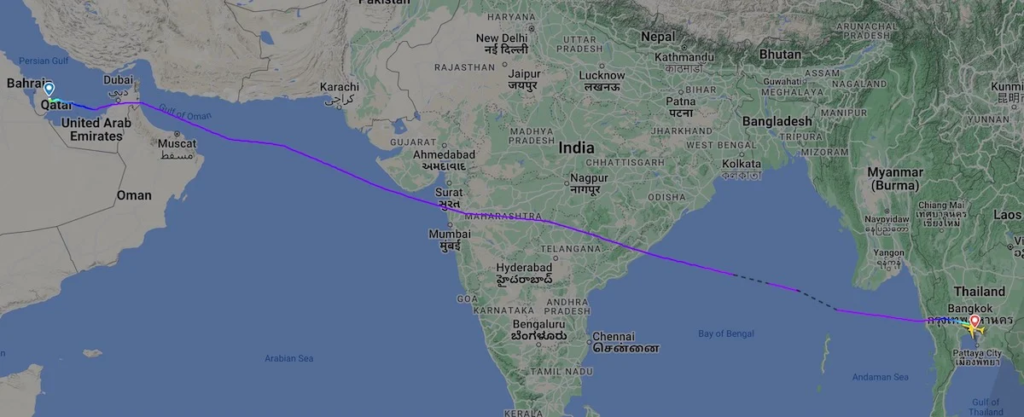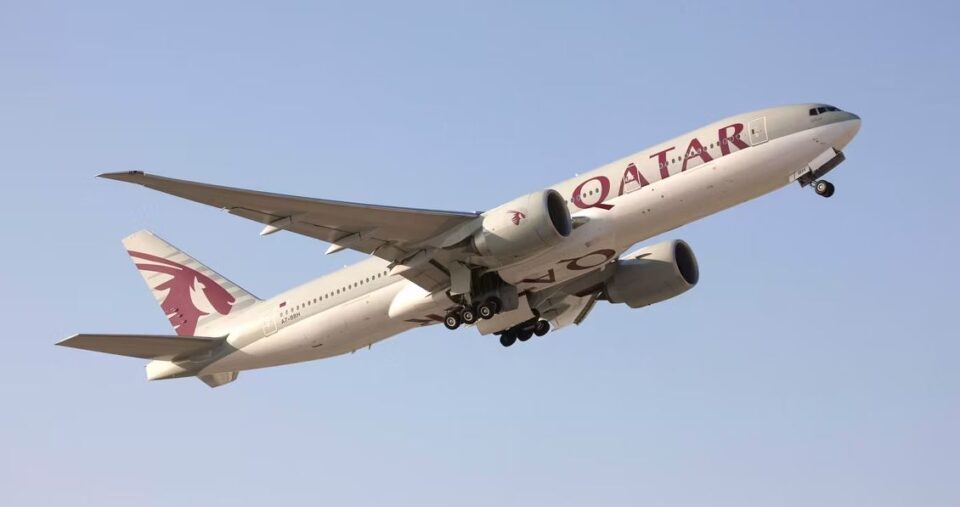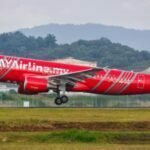For injuries caused amid turbulence over the Bay of Bengal, some passengers received medical attention.
On Wednesday evening, passengers on a Qatar Airways aircraft to Bali were hurt by extreme clear air turbulence, forcing the flight to be diverted to Bangkok.
incident information
A significant wave of turbulence prompted Qatar Airways flight QR960 between Doha (DIA) and Denpasar (DPS) to divert to Bangkok (BKK) on May 10 while it was flying through 37,000 feet over the Bay of Bengal, injuring numerous passengers.
Approximately 30 minutes after the incident and less than six hours after takeoff, the airplane landed in Bangkok at around 18:00 ICT, giving passengers and crew time to seek medical attention.
The airplane, a 12-year-old Boeing 777-300ER (A7-BAN), has not been recorded as having any damage. After spending the night at Bangkok Airport, the plane left for Denpasar on Thursday afternoon. According to the airline, all travelers received meals and lodging during the unplanned layover in Thailand.
After an almost four-hour flight, the QTR960D jet that was still in the air finally touched down in Denpasar at 21:41 WITA.
Qatar Airways verified the event and provided some additional details in a tweet.

Following a run-in with clear air turbulence, Qatar Airways aircraft QR960 from Doha to Denpasar diverted to Bangkok, causing some moderate and a few mild injuries among the passengers. Medical professionals were waiting for the plane when it safely touched down to help those who needed it, according to the Doha-based airline.
“Tomorrow (May 11), Qatar Airways will continue the trip to Denpasar by providing meals and overnight accommodations for all passengers in Bangkok. We are sorry if this has put our passengers through any hardship. Our top concern continues to be the safety and security of our passengers and crew.
Similar occurrences
Due to its erratic and occasionally unpredictable weather patterns, the Bay of Bengal, which separates India from Southeast Asia, has a long and infamous history of making passengers sick to their stomachs.
A Malaysia Airlines Airbus A380 (9M-MNF) was traveling between London Heathrow (LHR) and Kuala Lumpur (KUL) in June 2016 when it encountered extreme turbulence over the area, leaving 40 passengers with injuries serious enough to require medical attention upon arrival in Malaysia. 34 passengers and six staff members were hurt when the MH-1 airplane, which was sailing across the Bay of Bengal, was shook. The crew of MH-1 continued to Kuala Lumpur without experiencing any other problems.In July 2019, a second A380 traveling between Auckland (AKL) and Dubai (DBX) was buffeted by turbulence around Chennai. This time, the aircraft was being operated by Emirates. Upon arrival in Dubai, at least one person received emergency medical care for serious wounds, while 13 passengers and 13 crew members sought care for minor wounds. The airport’s medical team transported an unidentified person to the hospital.
The UAE GCAA stated in its final assessment that the accident was caused by extreme air turbulence brought on by a storm cell passing over the area. The GCAA encouraged cabin crew to keep in constant communication and to make sure everyone is wearing their seat belts during turbulence and flying.




